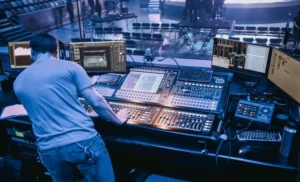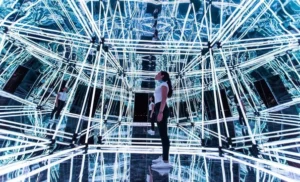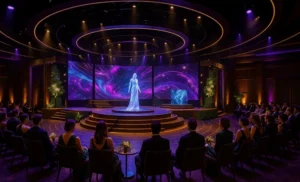Verified Market Reports shared that the digital photography market size was valued at USD 100 billion in 2024.
The industry is expected to generate USD 130 billion by 2033, which shows a CAGR growth of 3.1%.
Corporate events showcase your brand, culture, and values.
Such events create a highly visual impact, and there is no doubt that these events significantly influence your company’s perception.
That being said, professional event photography is essential for capturing high-quality images that represent your brand in the best light.
Think these are just photos? Think again, these images shape how your audience sees your brand.
You have to think of it as images that shape how other people and target audience perceive your brand, internally and externally.
Corporate event photographs are a powerful asset when it comes to marketing, PR, recruitment, and investor relations.
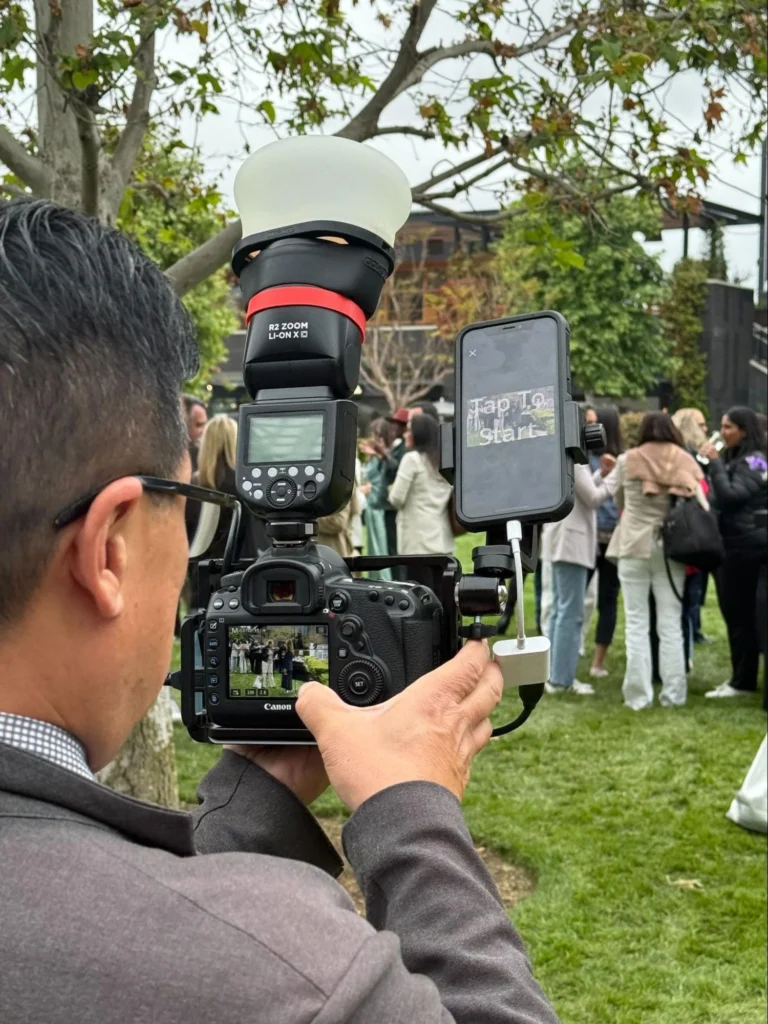
They offer long-term value by maintaining a professional and consistent image across all platforms.
But what most brands do is cut corners by hiring amateurs that may seem cost-effective, but it can lead to missed opportunities.
You need a solution that leaves a lasting impression.
To emphasize it more, GC Event Studio makes sure that you get a photography solution that reinforces your brand identity.
In this guide, we bring the top 10 tips for business event photography that will take it to the next level.
Understanding the Corporate Event Landscape
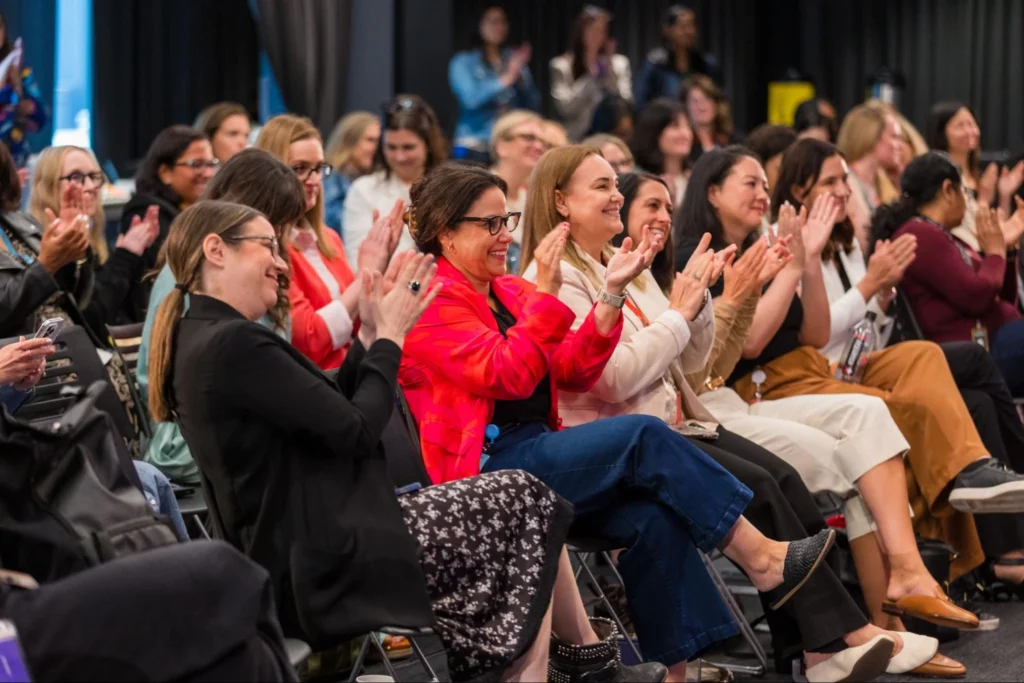
As soon as you land a client for corporate events, the next step should never be rushing to the final stage.
It is important to understand what their scope is and if we look at the bigger picture, what do we need to make of this event?
Such events have great differences in their nature and objectives (especially dependent on factors like company size, goals, objectives, budget, etc).
You will notice that each type of event requires a custom approach to photography.
Below are some of the most common types of corporate events and their unique photography needs.
Different Types of Corporate Events
From conferences to product launches, AGMs, and seminars, corporate photography encompasses several events.
For each event, the style and demands differ, which are explained below.
Conferences
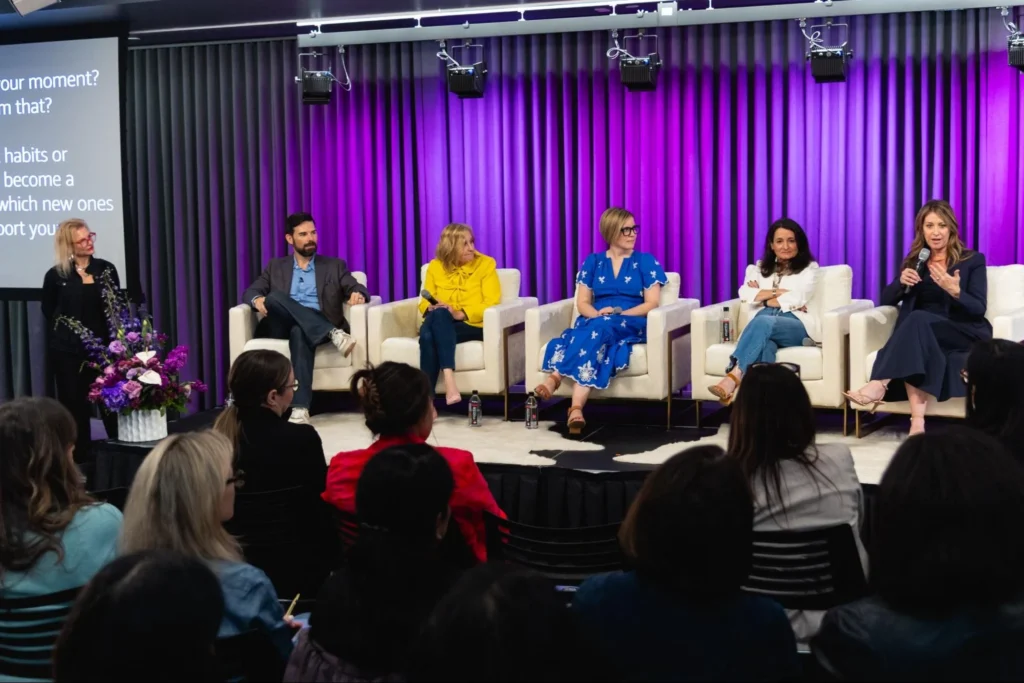
There are different types of conferences. But irrespective of that, they are large-scale events.
You will see leaders, experts, and professionals coming together to discuss and share insights.
Corporate event photography focuses on keynote speeches, panel discussions, and networking moments.
The photographs are used for post-event marketing, content creation, and building a reputation in the industry.
The goals of photography at such events are to reflect the atmosphere, the interactions, and highlight key moments.
Team-Building Events
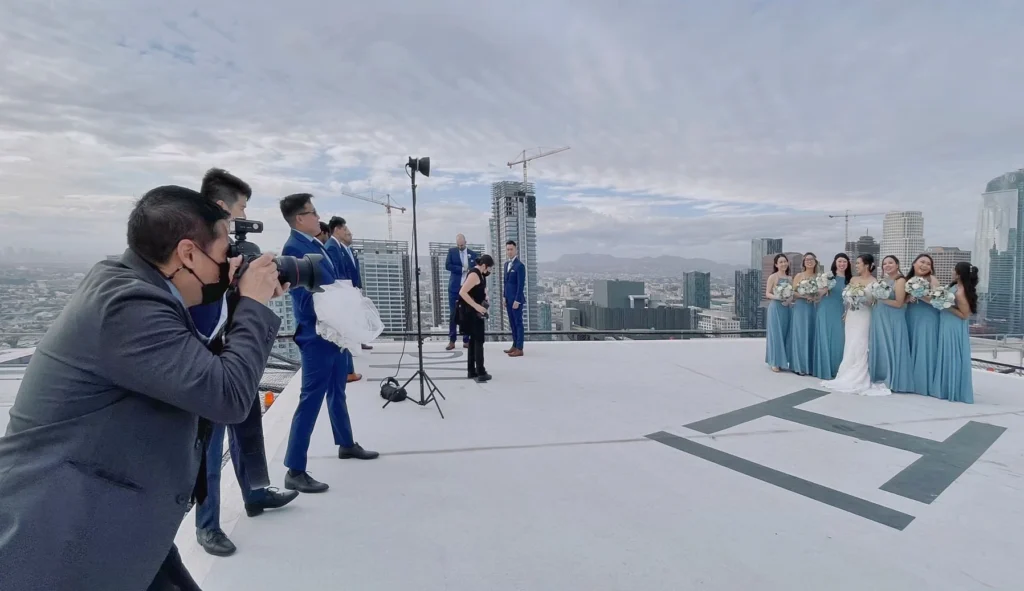
As the name suggests, such events are supposed to be more interactive.
They are used to bring collaboration for the team.
Based on the experience of a booth photographer, the style of the photography here is more candid, focusing on collaboration, fun activities, and team dynamics.
Product Launches
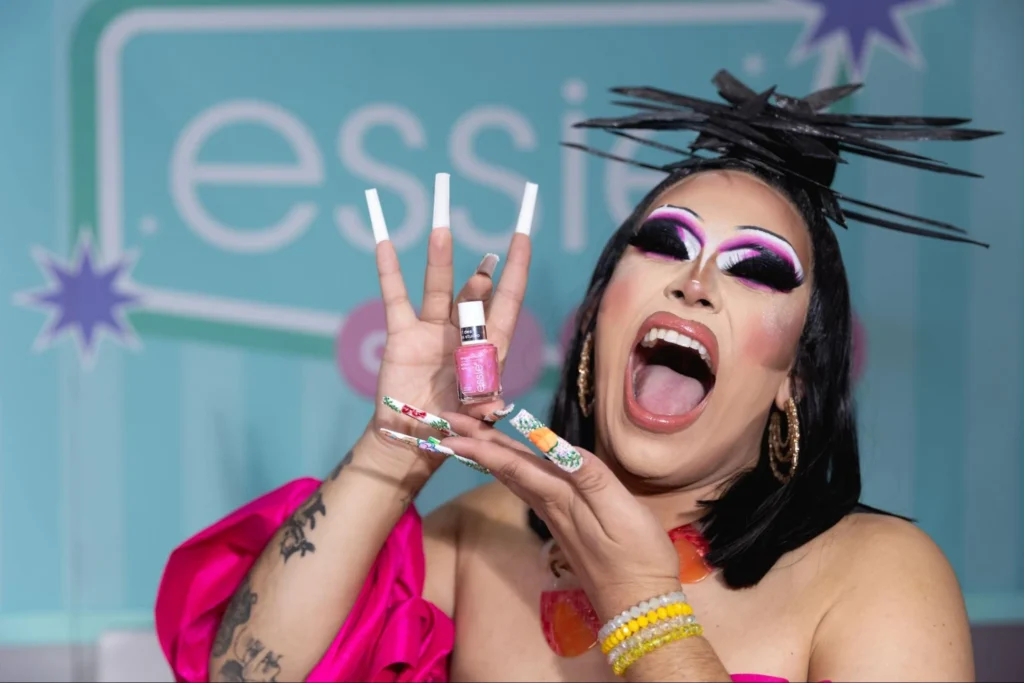
It is a high-stakes event at which the product is the star.
The photographs at this event have to capture the event thoughtfully.
If we talk about the photography for these events, it centers around creating a buzz around the new product.
It has to capture the excitement, and at the same time, showcase how the audience interacts with the product.
You can take close-up shots of the product, reactions from the attendees, and any demonstrations are important here.
Annual General Meetings (AGMs)
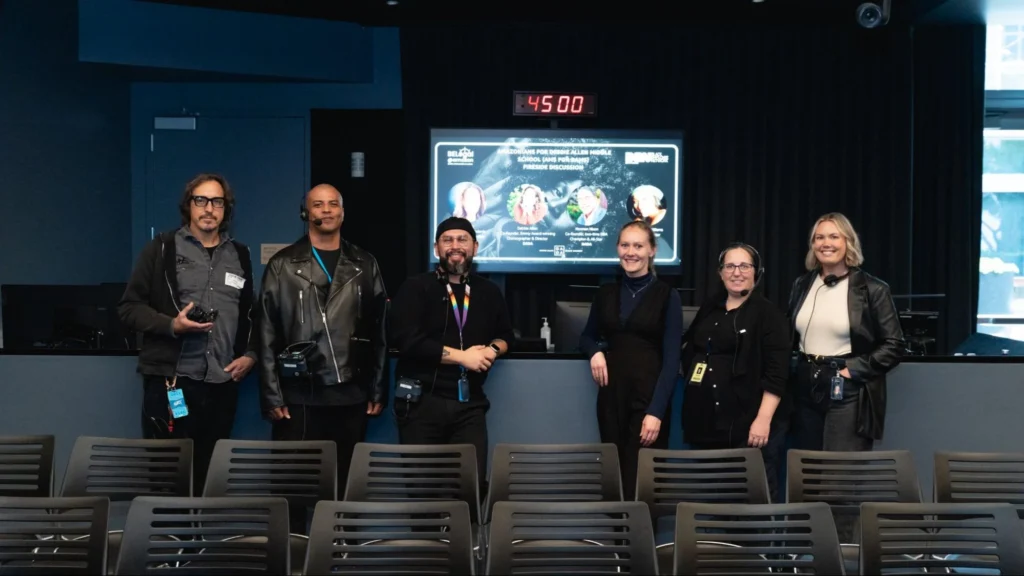
These are formal meetings for reporting on the company’s yearly performance.
The photography style here is not supposed to be loud as the focus is on key figures, speeches, and the formal atmosphere.
The photographs must convey professionalism and highlight the company’s achievements in a dignified way.
Seminars
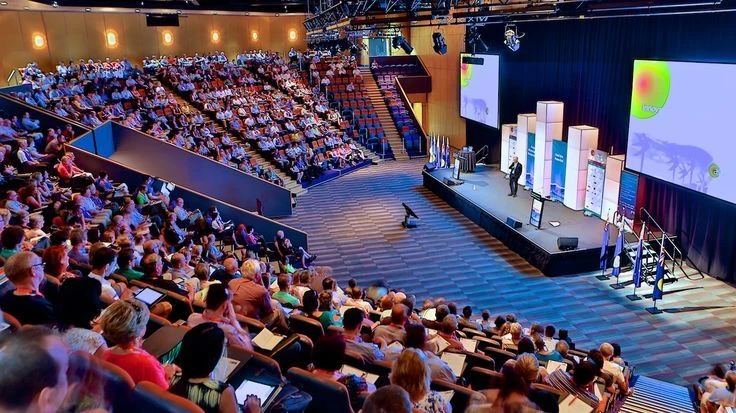
Image Courtesy Pinterest
Seminars are important corporate events.
In regard to corporate event photography, the purpose of this is more related to educational content.
It features speakers, discussions, and workshops.
Photography should emphasize highlighting the key moments, audience participation, and the overall learning experience.
The goal is to show the content being shared and the involvement of the attendees.
Top 10 Tips for Corporate Event Photography
In corporate event photography, you have to deliver images that properly show the brand, and the people.
Those days are gone when simple or casual photographs were accepted.
Now, every factor has to be considered.
Whether you are converting a conference, a product launch, or an executive retreat, these tips will help you deliver results that exceed expectations.
Let’s get started.
1. Plan Your Shots in Advance
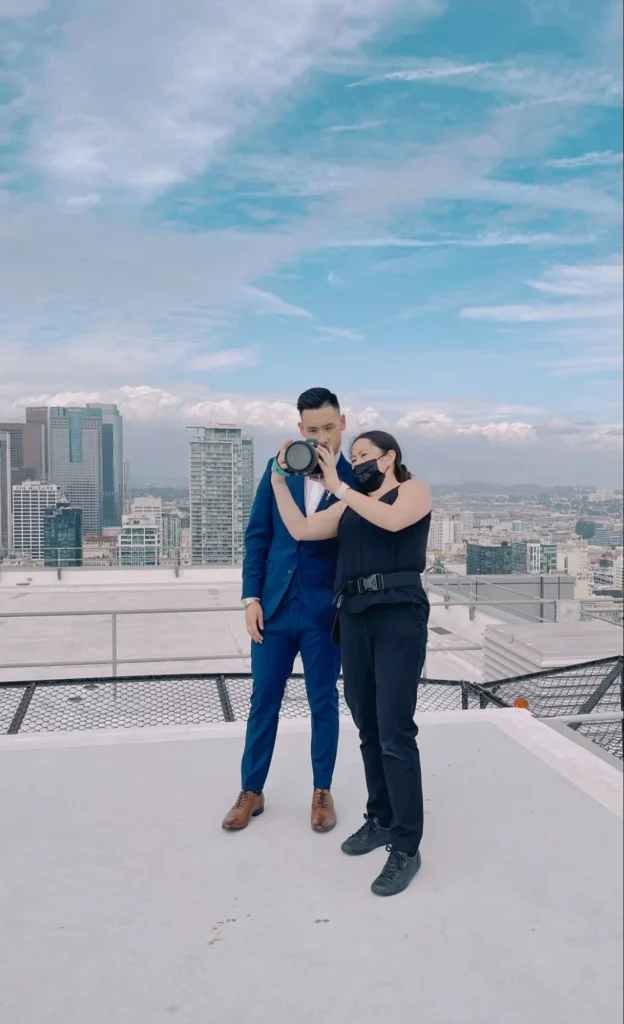
No two corporate events are the same, and that is why you should not just wing it with a camera.
Every event has a purpose, an agenda, and an objective to achieve, which is why meticulous pre-event planning is required.
You should start by requesting a full agenda in advance so that not only you but your team also understands the bigger picture.
However, you should not stop there, as it would be best to speak directly with the event coordinator or marketing lead.
Ask what “success” looks like for them.
Do they need hero shots for a press release? Social-friendly moments for live posting? Documentation of sponsor booths for ROI reports?
By asking these questions, you will not only be doing good to yourself but also to your client.
These priorities will shape not just what you shoot, but how you shoot it.
For example you can take shots from wide angles vs. close-ups, candids vs. formal compositions, and the list goes on.
Then, map the venue.
If you can’t do a walk-through beforehand, ask for a floor plan or check past photos of the space online.
Knowing where the keynote stage, breakouts, and branding elements will help you plan vantage points and lighting setups.
In addition to this, also create a short list.
Here is what you can add to your shot list:
- Registration and check-in
- Keynote speaker and panelists
- Networking and candid moments
- Branded elements (step-and-repeats, backdrops, booths)
- Team-building activities or product demos
Most importantly, sync your internal timeline with the event’s flow. Anticipate transitions.
A CEO greeting the team backstage might be more valuable to the company’s employer brand than their podium shot.
Trust us, this kind of planning isn’t extra work.
2. Dealing with Common Lighting Issues
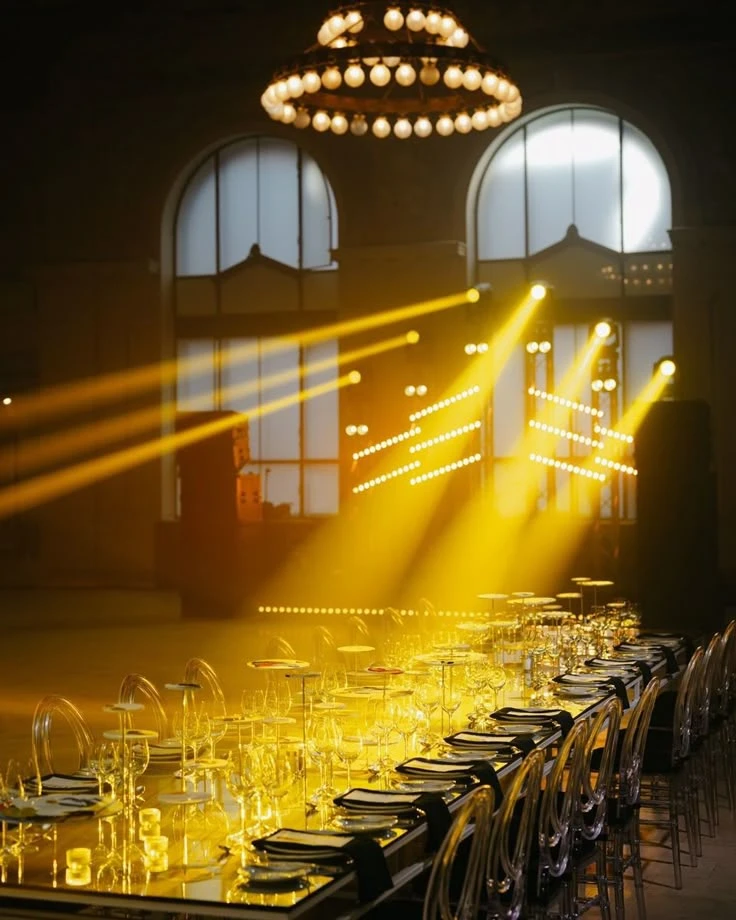
Image Courtesy Pinterest
Corporate venues and lightning rarely fight each other like gloves in hand.
You’ll deal with flickering fluorescents, awkward spotlights, low-lit ballrooms, and daylight spilling in through just one side of the room.
These setups aren’t ideal for clean, professional photos, so you need to be prepared.
But we have gotten corporate event photography tips for you, so don’t worry about that.
The first thing is to start with your white balance.
It is best to avoid Auto White Balance (AWB) in mixed lighting and set it manually based on the dominant light source or using a grey card during setup.
By doing so, you will have consistency across all shots, which matters when delivering a uniform gallery.
In addition to this, you can also use bounce flash, if not direct flash.
If there’s no suitable surface, attach a small softbox or diffuser.
Pro Tip: You should only use flash when it’s necessary.
Why? Most corporate clients want photos that look natural, not overly lit.
It gives you more control during editing, especially when correcting color casts or bringing out details in tricky lighting.
There might also be a case where the light won’t be strong.
Solution? You must have fast lenses.
If you want a flexible lens then go for A 24–70mm f/2.8.
While primes like 35mm or 85mm f/1.8 are great for clean, sharp shots in darker spaces.
If you want to shoot events at a lower ISO without compromising on image quality then wider apertures would be the best.
Here is how GC Event Studio manages lightning for different events:
3. Composition and Framing Techniques
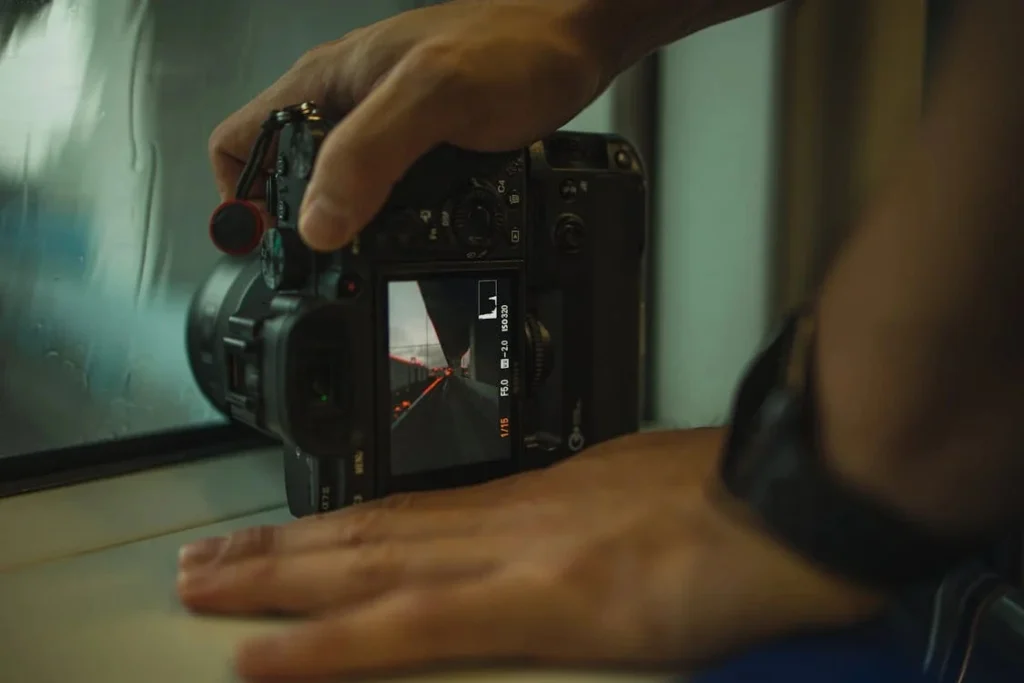
Image Courtesy Pexels
Honestly, framing is everything, and on top of it, composition plays an integral role.
They make a difference, as you don’t want to capture a simple, generic image.
It is not about following every composition rule, but you must have control over how you guide the viewer’s eyes.
The best is to place key subjects (like speakers or interactions) slightly off-center to create balance.
Now let’s talk about backgrounds in composition and framing techniques.
For corporate event photography, first observe venues: are they more crowded or less?
Because let’s say it’s a busy event, then they would have clutter.
So, a slight shift in your angle can remove distractions without needing heavy edits later.
If you can’t move objects, move yourself.
Also, start thinking in layers.
Think about foreground elements, blurred, and those elements that can add depth.
If you are taking networking shots, shoot through small crowds or place objects at the edge of your frame to make viewers feel part of the moment.
Framing also changes based on the moment.
For keynote speakers or panels, you can aim for symmetry and clarity.
Or if you have to photograph for mingling or candid shots, go handheld and move quickly, these are about mood, not perfection.
In short, it is best to keep the frame with the brand in mind. Every photo may end up on a website, press kit, or internal presentation.
4. Gear Essentials (And What Not to Bring)
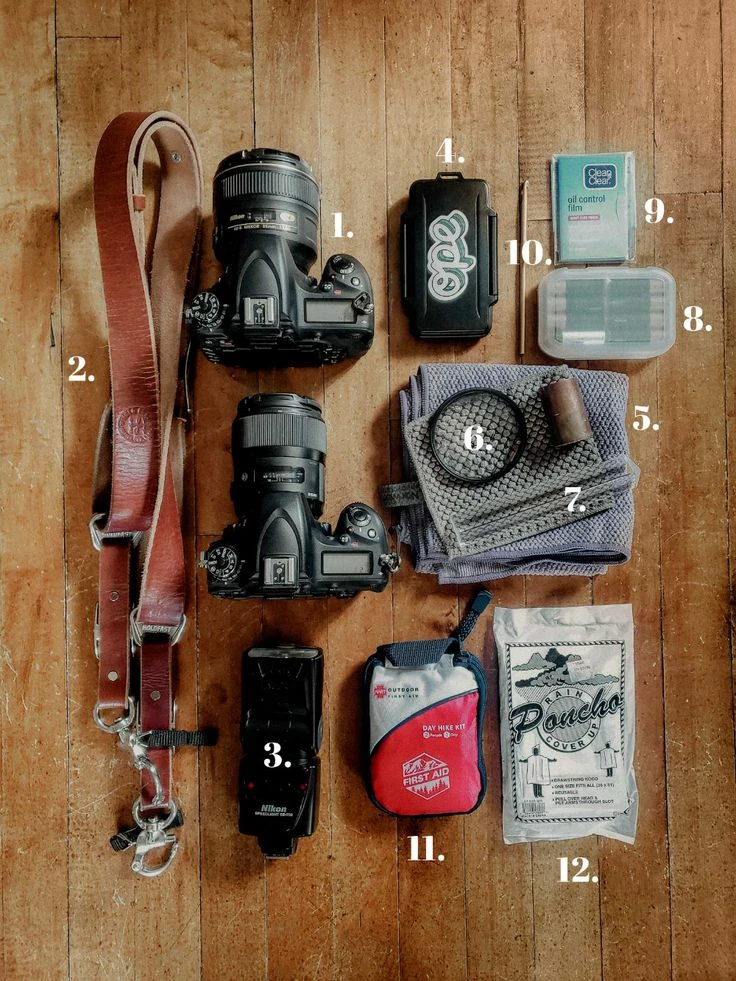
Image Courtesy Pinterest
You don’t need flashy gear.
You need reliable and professional tools that won’t fail mid-shoot and would actually provide value for money.
In order to know what you need to pack, think of the event’s scale. But a solid base kit can cover 90% of situations.
So, the first essential is that you should have two camera bodies.
Not only for backup, but having a wide lens on one and a zoom on the other saves time and helps you react faster.
This covers wide shots, tight speaker frames, and spontaneous group interactions without lens swaps.
Fast primes that include 35mm f/1.4 or 85mm f/1.8 are best for low-light or detail shots.
It is best to keep one in your bag if you’re working in darker venues or need more shallower depth of field for portraits.
If you are using flash for commercial event photography, make sure you are using flashes with manual control. Why?
Because on-camera flash with bounce capability is good for indoor events.
But if you have a large setup, a compact off-camera flash with a wireless trigger gives the photographer more control.
Bring plenty of batteries and dual-slot memory cards.
Events run long, and your gear should never be the reason you miss a key moment.
Use cards with fast write speeds to avoid buffer issues during high-action segments.
If you’re covering a networking breakfast in a small room, don’t show up with rolling cases and lighting stands.
But for a conference across multiple rooms, extra gear and a small roller bag make sense. Adapt.
Don’t bring noisy shutter cameras, overly large lenses (like 300mm telephotos), or any gear you’re not confident using under pressure.
5. Don’t Forget to Integrate Brand Elements

If you want to deliver value to your corporate clients, then it is best to subtly reinforce their brand through photography.
It does not mean pointing your camera at every logo you see. It means that you have a complete understanding of brand cues without disrupting the moment.
So, what can you do to make this immaculate? Start looking for brand natural placements.
It includes branded lanyards around necks, step-and-repeat backdrops behind speakers, and logo walls near networking areas.
Instead of shooting them head-on, capture them while people are interacting around them.
It makes the brand part of the environment, not the subject.
Here is an example of how GC Event Studio does it all effortlessly.
All the branding elements in the background are added naturally while getting the shots that do not seem forced.
In branding, the colors are also an important part.
For corporate event photography, it is best to frame group shots or candids with brand-colored lights, banners, or attire in the scene.
It would surely be more effective than pasting or capturing logos in every single picture.
6. Capturing Candid and Posed Shots Without Disrupting Flow
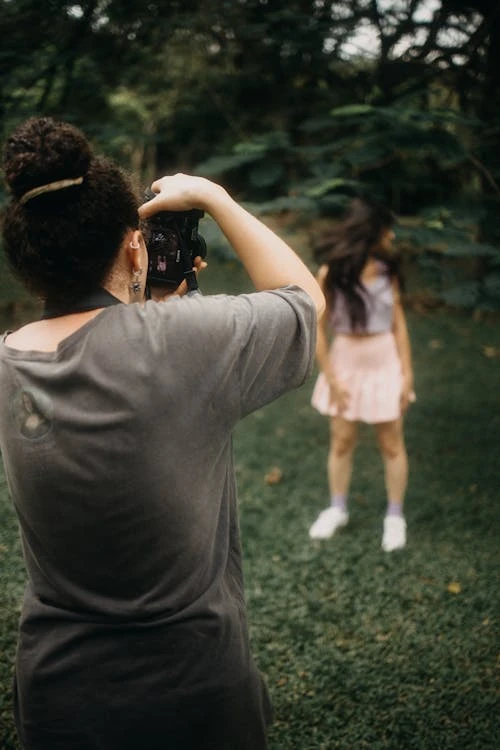
Image Courtesy Pexels
As a corporate event photographer, your job is to capture natural interactions while knowing when to step in.
You can look for more such inspirations here.
If you want to take candid moments, professional photographers use a telephoto lens (70–200mm).
You can position yourself at a 45-degree angle to subjects rather than head-on for more dynamic framing.
If you are taking posed shots, see what moment is better.
You can approach during breaks or transitional moments.
And also, while you direct the shot, keep it minimal so the instructions are quick.
“Just a quick one. You can stay as you are.”
It reduces stiffness and saves time.
Also, you must have read that balance is key: too many posed shots look staged; too many candids may lack context.
Aim for a 70/30 mix with posed images clearly identifiable and candid images rich in storytelling.
7. Post-Processing and Delivery Workflow That Matches Client Expectations
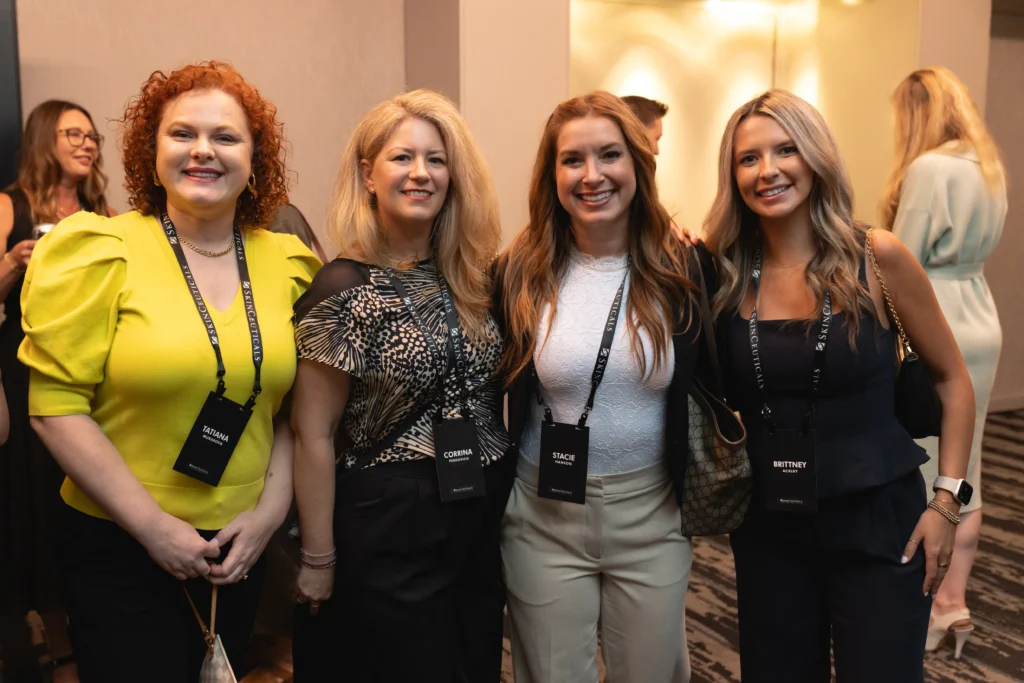
The actual results that you are going to show to your corporate client start from here!
The post-processing phase is very crucial to delivering value.
In this part, you have to align with brand guidelines, timelines, and usage intent.
Here is a pro tip from the professionals:
Start with global adjustments in Lightroom: correct white balance (especially under mixed lighting), fix exposure, and apply consistent contrast.
You can use lens correction profiles for clean geometry and remove chromatic aberration (especially with wide lenses in high-contrast lighting).
Clone out distractions: stray cables, half-visible signage, and exit signs to remove anything that pulls attention from the subject.
For export, organize files clearly: /EventName/Finals/Speakers, /Networking, /Candid, etc.
Use consistent file naming (e.g., Client_EventName_001.jpg) to make selection easier for the marketing team.
You must provide high-res JPEGs in sRGB for print/social, and optionally, a resized set for web to your corporate clients.
Also, include a PDF contact sheet for quick review, especially if you’re delivering 300+ images.
8. Have a Bulletproof Backup Strategy (Before, During & After the Event)
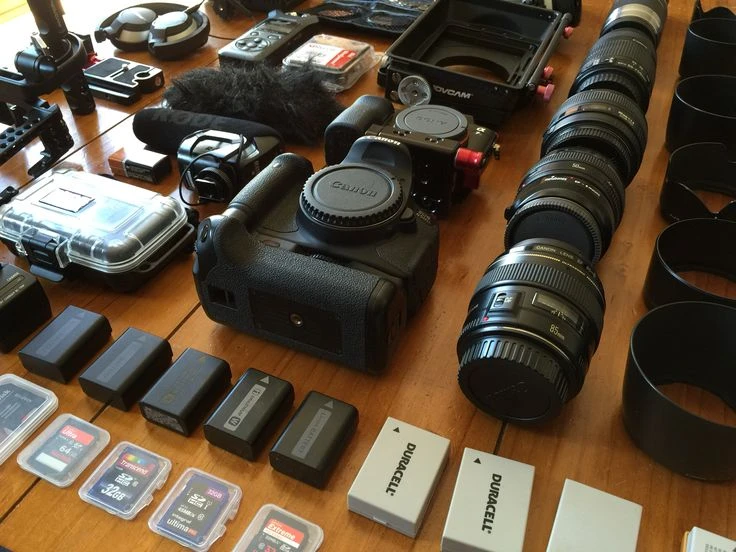
Image Courtesy Pinterest
Corporate event photography does not know the term ‘reshoot’.
Therefore, having a bulletproof backup strategy is a must.
If you miss a shot due to a corrupt card or a dead battery, not only is your reputation damaged, but you have also lost the client’s trust.
Below are some of backup plans you follow before during and after the event:
Before the event:
- Use dual memory card cameras set to record to both cards simultaneously, not overflow or RAW/JPEG split.
- Carry more cards than needed, all freshly formatted. Label used vs unused cards clearly.
- Pack extra batteries, especially for mirrorless systems. Battery grips or power banks with USB-C charging can be lifesavers.
During the event:
- Use multiple smaller cards (64–128GB) instead of one large card — this limits loss if one fails.
- Back up to a portable SSD or laptop during breaks if the event spans multiple days or locations.
- Protect cards from static, moisture, or accidental formatting by storing them in hard cases.
After the event:
- Backup files to at least two separate drives — one local, one offsite/cloud.
- Use automated folder sync tools like ChronoSync (Mac) or FreeFileSync (Windows) to avoid human error.
- Don’t format cards until the final delivery is complete and verified.
9. Using Silent Shutter and Custom Functions for Discrete Coverage

Image Courtesy Pinterest
As you know, corporate events require discretion, especially during speeches, boardroom, Q&A sessions, and discussions.
You can use modern mirrorless systems as it offers silent shutter modes (electronic shutter) to eliminate shutter noise entirely.
This is ideal for high-profile sessions where distraction must be minimized.
Additionally, leverage custom function presets on your camera:
- One for low-light candid settings (auto ISO, face-detect AF, silent mode).
- Another for stage shots (manual exposure, spot metering, controlled flash).
- A third for wide shots (higher aperture, slow shutter, stabilized lens).
This allows you to adapt instantly to fast-changing scenarios without fiddling with settings mid-moment.
10. Use Tethered Shooting for Instant Feedback
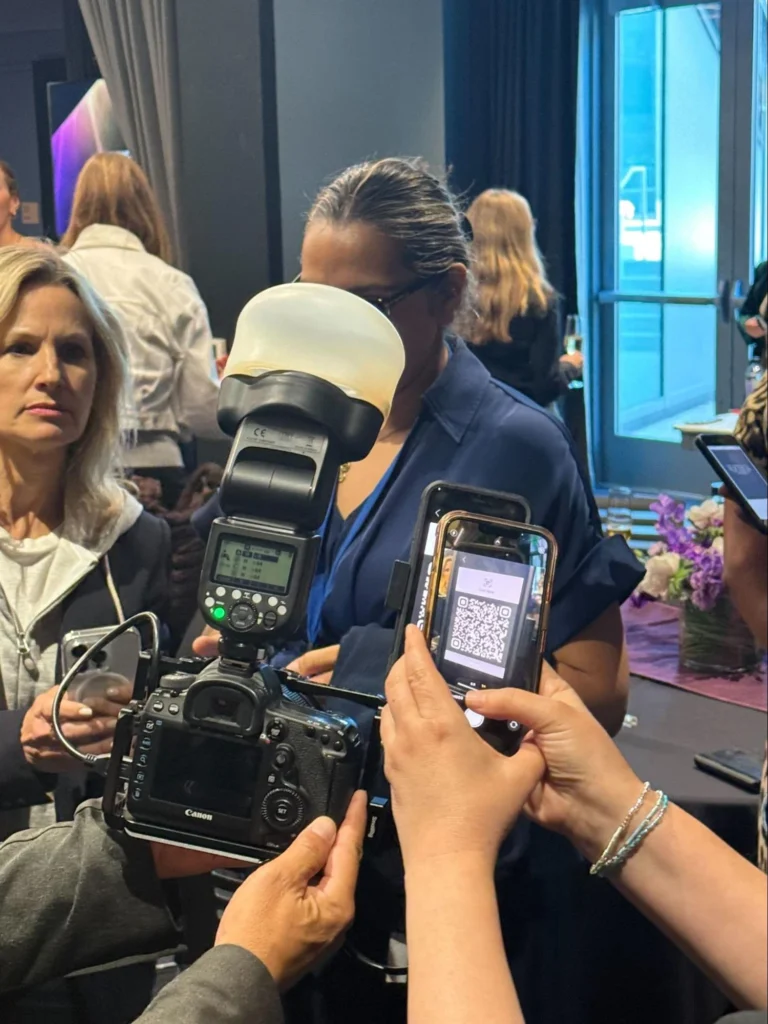
Last but not least, we have tethered shooting in case you want to have instant feedback.
At corporate events, tethered shooting gives real-time image review and aligns your photography with branding elements.
What photographers do is that they connect their camera directly to a laptop or tablet using software like Capture One, Lightroom, or Smart Shooter.
Now, the stakeholders or even your PR, marketing, or executives, will be able to view shots on a larger screen in real-time.
You can use it when:
- Capturing posed shots for press releases or internal communication.
Shooting key visuals for same-day publication. - Working with design teams who may request specific framing or space for overlay text.
Tethered setups also help spot exposure or sharpness issues early, saving time in post.
Just ensure your workstation is tucked away, cables are secured, and power is managed to avoid any disruption.
What to Know About Expectations of Corporate Clients?
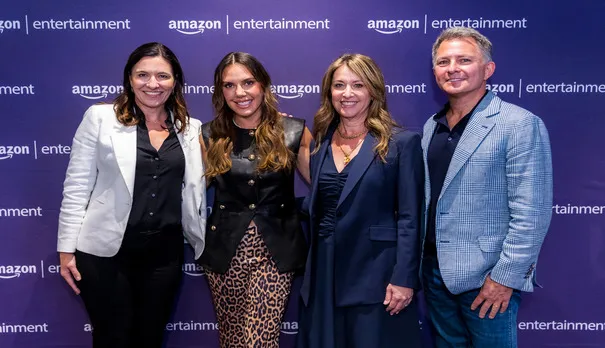
Corporate event photography is a huge responsibility.
You are not there to click your camera buttons, you are there to capture those moments that are going to influence people’s minds.
In light of this, corporate clients have very precise and clear expectations (though they might sound long and heavy).
Below are some of the key expectations you should know when you book a client for professional event photography.
- You must know and understand professionalism and how to adhere to it whether you are under pressure or not.
Clients expect photographers to have a complete understanding of the company’s tone and values, to represent those elements through photos.
You have to be discreet in capturing events.
You will be able to capture events discreetly.
Your captured photos will align with the brand and messaging of the company.
- Turnaround time is another top expectation of large-scale clients.
Oftentimes, they require quick access to high-quality images so that they can be shared across social media.
Make sure your workflows are doing their best.
- Discretion is essential. Why? Because at the event, there will be some sensitive moments, private conversations, or confidential presentations.
Professional photographers must understand the importance of respecting privacy while capturing highlights that reflect the event’s overall success.
Conclusion
Corporate event photography requires professionalism and understanding to tackle the event.
As you prepare for the event, make sure you have followed the tips that suit you the best.
The list is created by utilizing the professionals’ keen learning experiences.
Using it will make you a professional corporate event photographer.
Corporate Event Photography – GC Event Studio
Got a business event coming up? No worries, we have got your back.
At GC Event Studio, we bring professional corporate event photography services that influence your target audience and create an impression.
From having next-gen event photography equipment to having professional photographers, we have got what you need.
FAQs
How to photograph an event?
The first thing is that you must understand their agenda, purpose, and flow.
Then create a shot list, so that you can scout the venue for lighting conditions, and use versatile gear.
Make sure that you are following all the required tips we have mentioned, such as backup strategy, gear essentials, etc.
What are the five responsibilities of a corporate event photographer?
Well, a corporate event photographer plans, adapts, and delivers visuals that serve a brand’s broader goals. Here are five core responsibilities:
- Coordinate with organizers, review the schedule, scout the venue, and create a shoot list based on key moments.
- Focus on high-value shots like keynotes, crowd engagement, networking, branded setups, and candid interactions.
- Ensure the photos reflect the company’s image by using clean composition, capturing logos subtly, and highlighting diversity.
- Handle gear confidently in dynamic lighting, such as adjusting ISO, shutter speed, aperture, and using lighting tools as needed.
- Edit images to match brand aesthetics, name files properly, and deliver galleries within agreed-upon timelines.

